-
 Bitcoin
Bitcoin $95,622.6443
-0.82% -
 Ethereum
Ethereum $1,834.6605
0.29% -
 Tether USDt
Tether USDt $1.0002
-0.02% -
 XRP
XRP $2.2015
-0.19% -
 BNB
BNB $596.2409
-0.24% -
 Solana
Solana $145.6548
-1.72% -
 USDC
USDC $0.9999
0.00% -
 Dogecoin
Dogecoin $0.1744
-2.78% -
 Cardano
Cardano $0.6946
-1.18% -
 TRON
TRON $0.2483
0.16% -
 Sui
Sui $3.2220
-5.23% -
 Chainlink
Chainlink $14.0830
-2.22% -
 Avalanche
Avalanche $20.1811
-3.69% -
 Stellar
Stellar $0.2686
-1.45% -
 UNUS SED LEO
UNUS SED LEO $8.9767
0.62% -
 Toncoin
Toncoin $3.0918
-3.19% -
 Shiba Inu
Shiba Inu $0.0...01301
-1.85% -
 Hedera
Hedera $0.1789
-2.92% -
 Bitcoin Cash
Bitcoin Cash $358.2190
-3.18% -
 Hyperliquid
Hyperliquid $20.4390
-0.91% -
 Litecoin
Litecoin $86.0020
-1.33% -
 Polkadot
Polkadot $4.0054
-3.29% -
 Dai
Dai $1.0001
0.00% -
 Bitget Token
Bitget Token $4.3585
-0.77% -
 Monero
Monero $274.9787
-0.13% -
 Ethena USDe
Ethena USDe $1.0006
-0.02% -
 Pi
Pi $0.5898
0.31% -
 Pepe
Pepe $0.0...08146
-4.28% -
 Aptos
Aptos $5.1389
-4.22% -
 Uniswap
Uniswap $5.0650
-2.05%
How to register a digital currency wallet
When selecting a digital currency wallet, prioritize security features like encryption, two-factor authentication, and phishing protection to safeguard your cryptocurrency assets.
Jan 11, 2025 at 07:05 pm
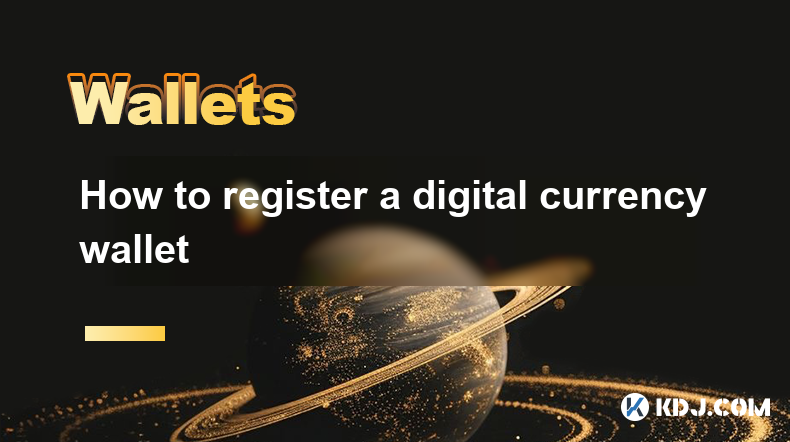
Key Points:
- Understanding the different types of digital currency wallets
- Choosing the right wallet for your needs
- Setting up a secure digital currency wallet
- Storing and managing your digital currency assets
- Troubleshooting common digital currency wallet issues
How to Register a Digital Currency Wallet
1. Determine Your Wallet Needs
- Type of cryptocurrency: Consider whether you need a wallet that supports a specific cryptocurrency, such as Bitcoin, Ethereum, or a multi-currency wallet that supports multiple coins.
- Functionality: Determine what features you require in a wallet, such as multi-party authorization, cold storage, or QR code scanning.
- Security: Select a wallet that employs robust security measures, such as encryption, two-factor authentication, and phishing protection.
2. Choose Your Wallet Type
Hardware Wallets:
- Offer the highest level of security by storing private keys offline in a physical device.
- Ideal for long-term storage of large amounts of cryptocurrency.
- Can be expensive and require specific hardware expertise.
Software Wallets:
- Available as desktop, mobile, or online applications.
- Provide a convenient and accessible storage method for smaller amounts of cryptocurrency.
- Susceptible to online hacks and vulnerabilities, but often offer user-friendly interfaces.
Paper Wallets:
- Generate private and public keys offline and store them on a physical document.
- Highly secure but cumbersome to use and susceptible to physical damage.
- Suitable for small amounts of cryptocurrency that require infrequent access.
3. Set Up a Secure Digital Currency Wallet
Step 1: Choose a Reputable Provider
- Research and compare different wallet providers, focusing on security, reputation, and customer support.
- Read reviews and check security certifications to ensure trustworthiness.
Step 2: Download and Install
- Download the wallet software or create an online account with the chosen provider.
- Follow installation instructions carefully and ensure compatibility with your operating system.
Step 3: Create a Strong Password
- Set a strong and unique password that meets the specified password requirements.
- Use a combination of uppercase, lowercase, numbers, and special characters.
Step 4: Enable Two-Factor Authentication
- Activate two-factor authentication (2FA) to add an extra layer of security to your wallet.
- Choose between SMS-based, email-based, or hardware-based 2FA methods.
4. Store and Manage Your Digital Currency Assets
- Receiving Crypto: Provide your wallet address to others to receive cryptocurrency.
- Sending Crypto: Enter the recipient's wallet address and specify the amount of cryptocurrency to transfer.
- Managing: Track your cryptocurrency balance, view transaction history, and set up notifications or alerts.
5. Troubleshooting Common Digital Currency Wallet Issues
- Lost Wallet File: Recover your wallet using backup methods such as seed phrases or private key storage.
- Forgotten Password: Contact support or use password recovery mechanisms if you forget your wallet password.
- Suspicious Activity: Monitor wallet activity and report any unusual transactions or login attempts.
FAQs:
Q: What is a digital currency wallet?
A: A digital currency wallet is a software or hardware device that stores your cryptocurrency securely and allows you to manage your assets.
Q: How do I choose the right digital currency wallet?
A: Consider the type of cryptocurrency you hold, the wallet's functionality, security features, user interface, and compatibility with your devices.
Q: How do I create a digital currency wallet?
A: Choose a reputable provider, download the wallet software, create a strong password, and enable security measures such as two-factor authentication.
Q: How do I store and manage my digital currency assets?
A: Store your cryptocurrency in a secure wallet, receive and send funds using wallet addresses, and monitor your wallet activity regularly.
Q: What are common digital currency wallet issues and how do I troubleshoot them?
A: Common issues include lost wallet files, forgotten passwords, and suspicious activity. You can resolve these issues using recovery methods, contacting support, or monitoring wallet activity for anomalies.
Disclaimer:info@kdj.com
The information provided is not trading advice. kdj.com does not assume any responsibility for any investments made based on the information provided in this article. Cryptocurrencies are highly volatile and it is highly recommended that you invest with caution after thorough research!
If you believe that the content used on this website infringes your copyright, please contact us immediately (info@kdj.com) and we will delete it promptly.
- How Much Will 2,500 XRP Be Worth By 2026? XRP Price Prediction!
- 2025-05-04 17:20:12
- The U.S. government may be one of the largest holders of Bitcoin
- 2025-05-04 17:20:12
- What if the next top crypto project isn't already sitting at the top of the charts?
- 2025-05-04 17:15:12
- Cryptocurrency Is More Than Just a Buzzword Now—It's a Revolution in the Making
- 2025-05-04 17:15:12
- As Bitcoin’s price steadily stays above $90k, all eyes are on altcoins, particularly their top dogs: Ripple’s XRP and Dogecoin.
- 2025-05-04 17:10:12
- The Pi Network's DApp Ecosystem: A Glimpse into the Future
- 2025-05-04 17:10:12
Related knowledge
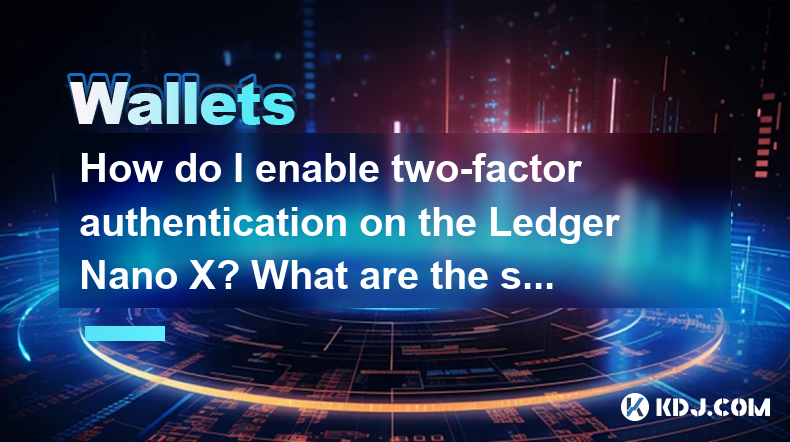
How do I enable two-factor authentication on the Ledger Nano X? What are the security options?
May 02,2025 at 09:49pm
Enabling two-factor authentication (2FA) on your Ledger Nano X is a critical step in securing your cryptocurrency assets. The Ledger Nano X offers robust security options that enhance the protection of your digital wealth. In this article, we will guide you through the process of enabling 2FA on your Ledger Nano X and explore the various security featur...
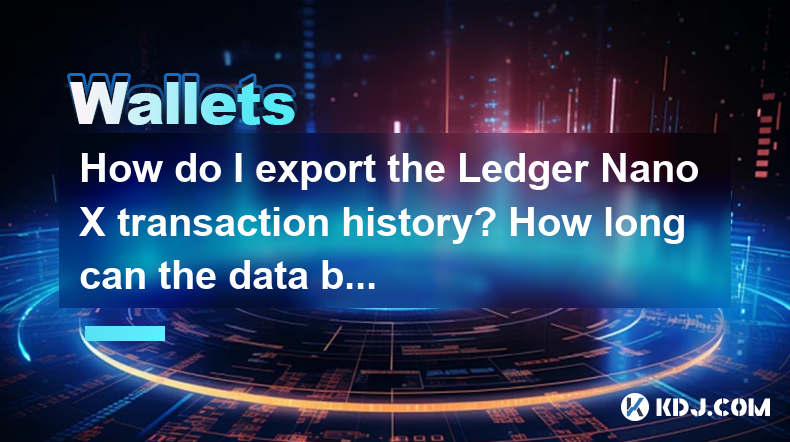
How do I export the Ledger Nano X transaction history? How long can the data be saved?
May 04,2025 at 07:21am
Introduction to Ledger Nano X and Transaction HistoryThe Ledger Nano X is a hardware wallet designed to store your cryptocurrency safely. It supports a wide range of cryptocurrencies and offers robust security features. One of the essential aspects of managing your cryptocurrencies is keeping track of your transaction history. The Ledger Nano X allows y...
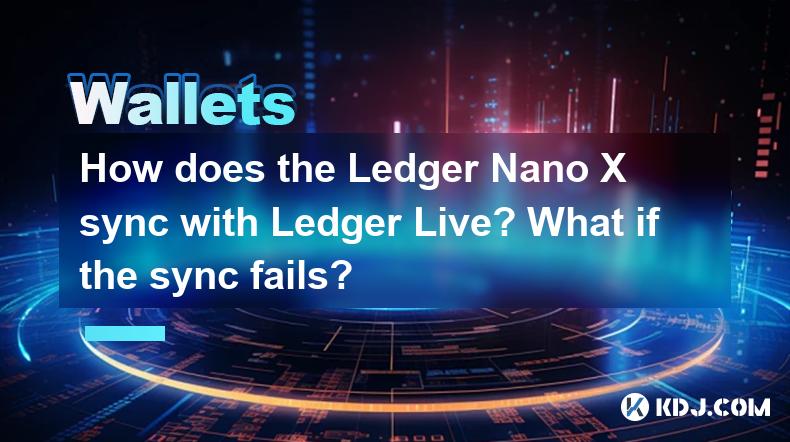
How does the Ledger Nano X sync with Ledger Live? What if the sync fails?
May 04,2025 at 12:07pm
The Ledger Nano X is a popular hardware wallet that allows users to securely manage their cryptocurrency assets. One of the key features of the Ledger Nano X is its ability to sync with the Ledger Live application, which provides a user-friendly interface for managing your crypto portfolio. In this article, we will explore how the Ledger Nano X syncs wi...
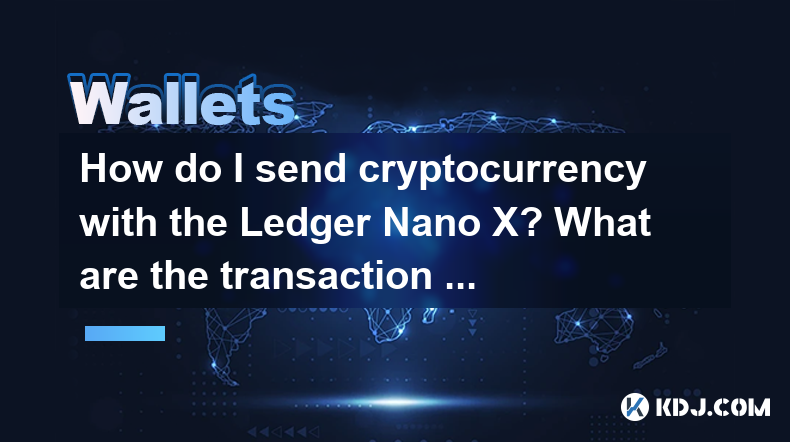
How do I send cryptocurrency with the Ledger Nano X? What are the transaction confirmation steps?
May 03,2025 at 05:01am
Sending cryptocurrency using the Ledger Nano X involves a series of steps that ensure the security and accuracy of your transactions. This process is designed to be user-friendly while maintaining the high level of security that Ledger devices are known for. In this article, we will guide you through the process of sending cryptocurrency with the Ledger...
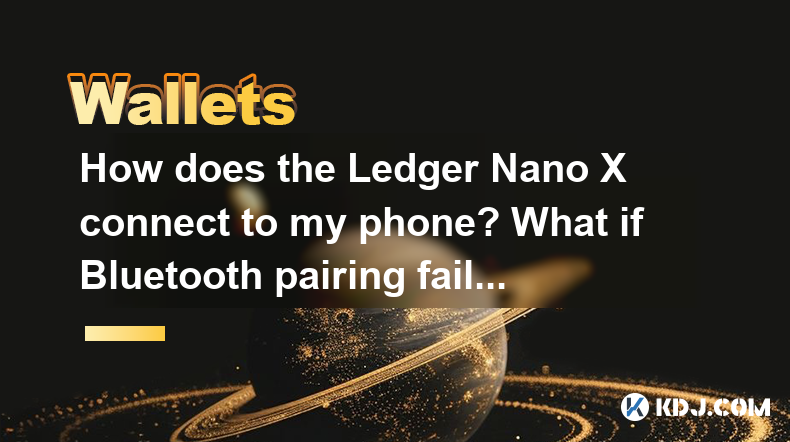
How does the Ledger Nano X connect to my phone? What if Bluetooth pairing fails?
May 02,2025 at 07:07pm
The Ledger Nano X is a popular hardware wallet designed to securely store your cryptocurrency. One of its key features is the ability to connect to your smartphone via Bluetooth, allowing for a seamless and convenient user experience. In this article, we will explore how to connect your Ledger Nano X to your phone and what to do if Bluetooth pairing fai...
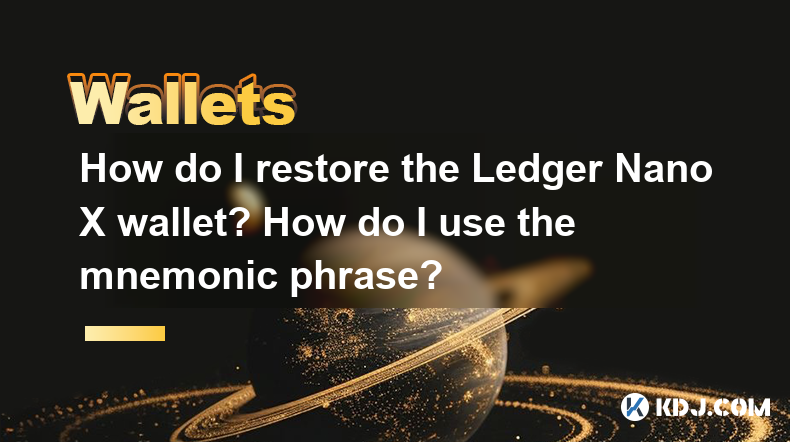
How do I restore the Ledger Nano X wallet? How do I use the mnemonic phrase?
May 04,2025 at 08:07am
Restoring a Ledger Nano X wallet and using its mnemonic phrase are critical processes for any cryptocurrency user. These steps ensure that you can recover your funds if your device is lost, damaged, or stolen. This article will guide you through the detailed process of restoring your Ledger Nano X wallet using the mnemonic phrase, ensuring you can acces...

How do I enable two-factor authentication on the Ledger Nano X? What are the security options?
May 02,2025 at 09:49pm
Enabling two-factor authentication (2FA) on your Ledger Nano X is a critical step in securing your cryptocurrency assets. The Ledger Nano X offers robust security options that enhance the protection of your digital wealth. In this article, we will guide you through the process of enabling 2FA on your Ledger Nano X and explore the various security featur...

How do I export the Ledger Nano X transaction history? How long can the data be saved?
May 04,2025 at 07:21am
Introduction to Ledger Nano X and Transaction HistoryThe Ledger Nano X is a hardware wallet designed to store your cryptocurrency safely. It supports a wide range of cryptocurrencies and offers robust security features. One of the essential aspects of managing your cryptocurrencies is keeping track of your transaction history. The Ledger Nano X allows y...

How does the Ledger Nano X sync with Ledger Live? What if the sync fails?
May 04,2025 at 12:07pm
The Ledger Nano X is a popular hardware wallet that allows users to securely manage their cryptocurrency assets. One of the key features of the Ledger Nano X is its ability to sync with the Ledger Live application, which provides a user-friendly interface for managing your crypto portfolio. In this article, we will explore how the Ledger Nano X syncs wi...

How do I send cryptocurrency with the Ledger Nano X? What are the transaction confirmation steps?
May 03,2025 at 05:01am
Sending cryptocurrency using the Ledger Nano X involves a series of steps that ensure the security and accuracy of your transactions. This process is designed to be user-friendly while maintaining the high level of security that Ledger devices are known for. In this article, we will guide you through the process of sending cryptocurrency with the Ledger...

How does the Ledger Nano X connect to my phone? What if Bluetooth pairing fails?
May 02,2025 at 07:07pm
The Ledger Nano X is a popular hardware wallet designed to securely store your cryptocurrency. One of its key features is the ability to connect to your smartphone via Bluetooth, allowing for a seamless and convenient user experience. In this article, we will explore how to connect your Ledger Nano X to your phone and what to do if Bluetooth pairing fai...

How do I restore the Ledger Nano X wallet? How do I use the mnemonic phrase?
May 04,2025 at 08:07am
Restoring a Ledger Nano X wallet and using its mnemonic phrase are critical processes for any cryptocurrency user. These steps ensure that you can recover your funds if your device is lost, damaged, or stolen. This article will guide you through the detailed process of restoring your Ledger Nano X wallet using the mnemonic phrase, ensuring you can acces...
See all articles





















































































